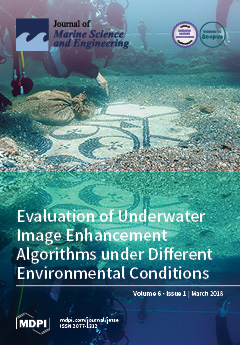Open AccessArticle
Antimacrofouling Efficacy of Innovative Inorganic Nanomaterials Loaded with Booster Biocides
by
Eldad Gutner-Hoch, Roberto Martins, Tania Oliveira, Frederico Maia, Amadeu M. V. M. Soares, Susana Loureiro, Chen Piller, Iris Preiss, Michal Weis, Severine B. Larroze, Tania Teixeira, João Tedim and Yehuda Benayahu
Cited by 32 | Viewed by 5540
Abstract
The application of nano-structured compounds has been increasing rapidly in recent years, in several fields. The use of engineered nano-materials as carriers of antifouling compounds is just beginning and already reveals clear advantages compared to bulk active compounds, such as slowed and controlled
[...] Read more.
The application of nano-structured compounds has been increasing rapidly in recent years, in several fields. The use of engineered nano-materials as carriers of antifouling compounds is just beginning and already reveals clear advantages compared to bulk active compounds, such as slowed and controlled release, novel functionality, and high loading capacity. This present study assesses the antifouling efficacy of two nanostructured materials, spherical mesoporous silica nanocapsules (SiNC) and Zn-Al layered double hydroxides (LDH), loaded with two commercial biocides, zinc prithione (ZnPT) and copper pyrithione (CuPT). The study used adult mussels from three geographical regions, the Atlantic Ocean, Mediterranean Sea, and the Red Sea, to examine the efficacy of the innovative compounds. The efficacy of these compounds on larvae of the bryozoan
Bugula neritina from the Mediterranean Sea and the Red Sea was also examined. The results of this study demonstrated the environmentally friendly properties of unloaded LDH against the two-model systems, adult mussels or bryozoan larvae. ZnPT entrapped in LDH demonstrated the most effective antifouling compound against the two model systems. A comparison of the impact of the two compounds on macrofouling organisms from the different marine habitats examined in this study indicates a distinction associated with the organisms’ different ecosystems. The Red Sea mussels and bryozoans, representing a tropical marine ecosystem, yielded the highest efficacy values among tested Atlantic Ocean and Mediterranean Sea mussels and bryozoans.
Full article
►▼
Show Figures





